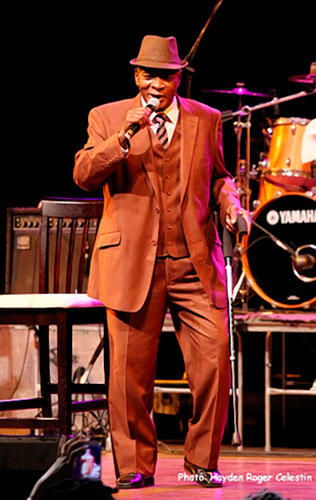News of the hospitalization of the Mighty Sparrow (Slinger Francisco) in New York set the rumor mill ablaze early this week, radio and TV stations, bloggers and others all weighing in with reports of what had befallen the self-styled “Calypso King of the World,” whether those reports were unfounded or otherwise.
At press time Sparrow was said to be in a diabetic coma and was being treated for the condition at a New York City hospital.
Over the course of his legendary career, there have been numerous occasions when rumors have sprouted about Sparrow’s illness or demise. Indeed, the ever unpredictable “Birdie” has himself parodied the rumor-mongering in song, “Simpson” and “Sparrow Dead” being two popular ditties from the extensive list contained in the Sparrow songbook.
Easily the most imposing figure the calypso tradition has known, Sparrow has established a world-wide reputation which has taken the art form to far-flung locales, frequently being the trail-blazing presence that introduced calypso to foreign audiences. Featured on a staggering number of recordings, these too have contributed to the outsize personality he has come to be.
Sparrow broke into the big time in Trinidad in 1956 when seemingly from out of nowhere his “Jean and Dinah” won him both the calypso king and road march titles for that year’s Carnival. It would be the first of several times he bested the competition for those two elite markers of calypso supremacy – eight times reigning as calypso monarch and eight times earning the road march title. He has been a multiple winner of similar titles in other Carnival celebrations.
Blessed with a magnificent voice, Sparrow has thus been able to be the perfect messenger for the subject matter embodied in the hundreds of selections he has performed over the years, which have run the gamut from biting social commentary to philosophy, story telling, humor, romance and saucy stuff. As a performer, he has been regularly referred to as being in a class all his own.
The 78-year-old Slinger Francisco was born in Grenada but was brought as an infant to Trinidad where the love of singing and music generally he first indulged as a member of a church choir became a passion that would eventually find expression in his involvement in calypso. With his breakthrough in 1956 came a determination – some would say brashness – to move the calypso tradition to a higher plane than his forerunners in the field were settling for. His undeniable ability afforded him the luxury of remaining true to his goal of uplifting the art form and gaining for it a greater level of respect.























